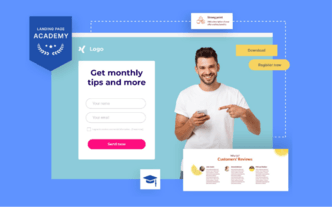People have only so much time to spend on your landing page (they could have been scrolling through memes at that time, appreciate that). Make sure that all the crucial pieces of information are above the fold (which means on the first visible screen, with no need to scroll down for them).
What should you place above the fold? A headline (remember message match?), value proposition (why are your visitors here and what would they get if they stay or click the button?), a Call to Action, and (optional) a form.
To sum up, I'm pretty sure that if you look hard enough, you'll find some unnecessary elements on your landing pages. Remove them; nobody will shed a tear over them. Make sure that your landing page provides a straightforward and quick experience.
If you want people to gather in-depth knowledge about your product or service, make contacting your company a landing page's goal. You may then heat a newly acquired lead with direct contact and share (almost) as much information as you need.











